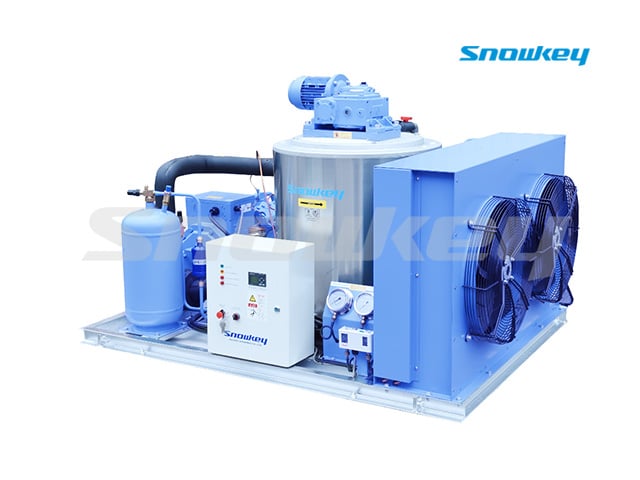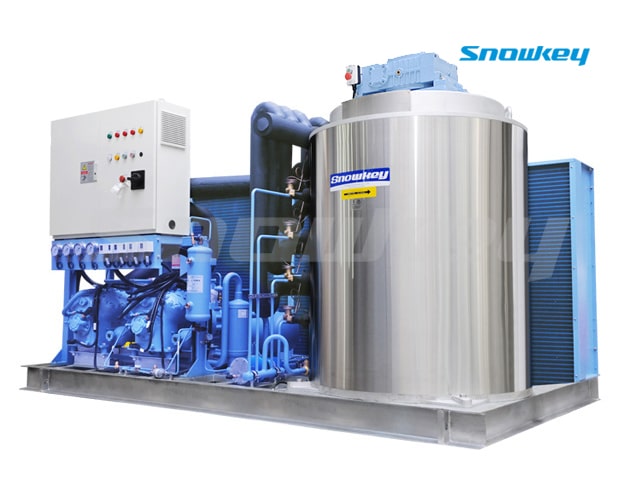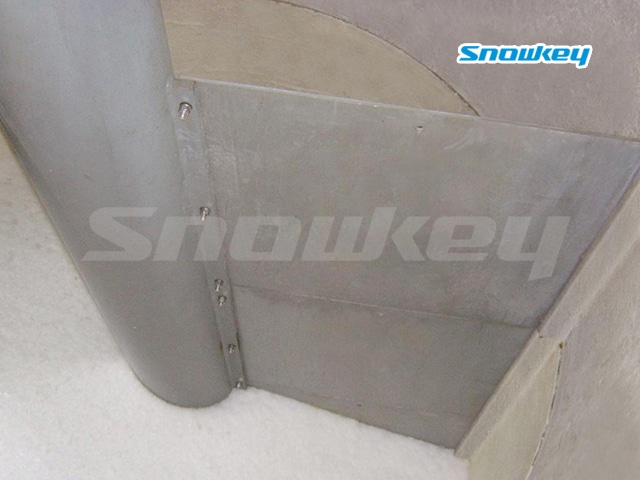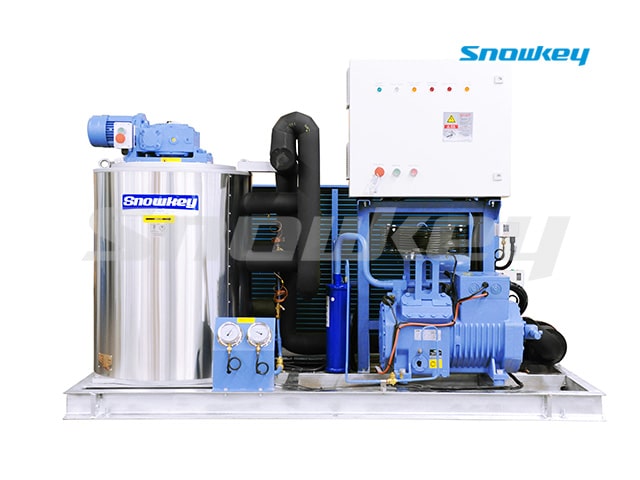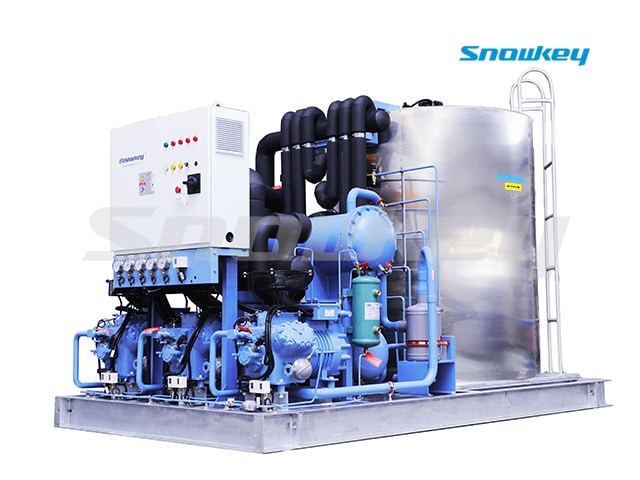Flake Ice Machine

Flake ice machine provides greater cooling effeciency than other type of ice.
Directly formed at low temperatures, ice flakes are (-) 8 Deg.C
High Effeciency and Energy Saving Flake Ice Machines
500 Kg to 60 Tons Per Day Flake Ice Plants
Ice flakes are dry, clean, beautiful in shape, sanitary and convenient as they as don’t form lumps.

FLAKE ICE EVAPORATOR
Relatively big contact area and good mobility can ensure their full contact with refrigerated objects to realize good preservation effect.
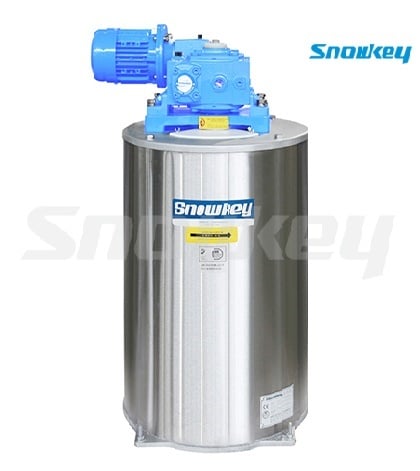
Special Design, high efficiency and energy saving.
The internal structure of flake ice machine evaporator is designed to improve head conduction efficiency of the inner wall and to keep the loop unblocked with special technology. The internally-scrapping ice-making mode is been adopted. Under this mode ice blades scrape ice on the inner wall of the evaporator while the evaporator itself doesn’t move. It reduces the loss of energy as much as possible, guarantees the supply of cooling agent as well as lowers the probability of cooling refrigerant leakage. Special Material In terms of material for the evaporator, a special kind of imported alloy is adopted. Its head conduction performance is superior and conforms with international standards for refrigeration and pressure containers.


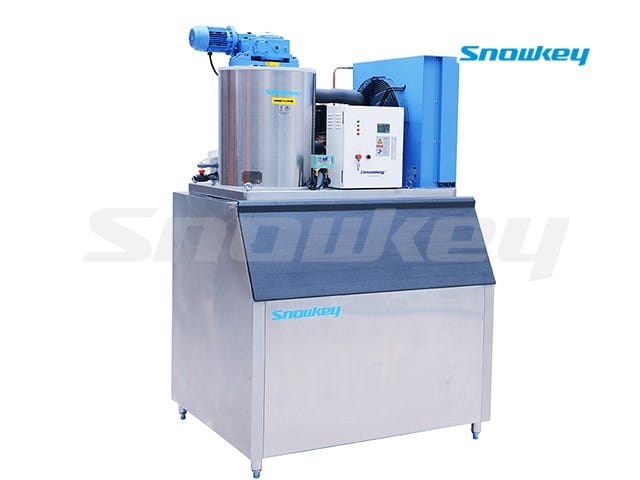
Special Processing Technology
Special technology of processing alloy material is adopted for the flake ice machine evaporator. We have specially researched and developed a set of technology of welding, surface treatment and stress elimination. Besides we have also adopted sophisticated equipment of welding, heat treatment and stress eliminating as well as photo furnace. Water Return System The water flowing down the inner walls of evaporator flows through water pan at the bottom of the evaporator and then into the water tank. The large area design and structure of water reception pan ensure that no water leaks from the bottom of ice flaker ad avoid lumped ice flakes. This ensures optimum consumption of water for flake ice machine.
Commercial Flake Ice

Flake Ice Maker Machine Applications
- Concrete Cooling Project
- Fishery and Aquatic Food Processing
- Mine Temperature Reduction
- Food Processing
- Artificial Skiing Ground
- Medical Facilties
- Dye Chemical Industry
- Medium and Large Chain Supermarket
- Fresh Preservation and Cooling Field Application
Product Catalog Detail & Request Form for Flake Ice Machine
To receive detailed Product Specifications and to receive Price Quotation for Flake Ice Machine, kindly fill this form and send us.
Our Sales person will get in touch with you.
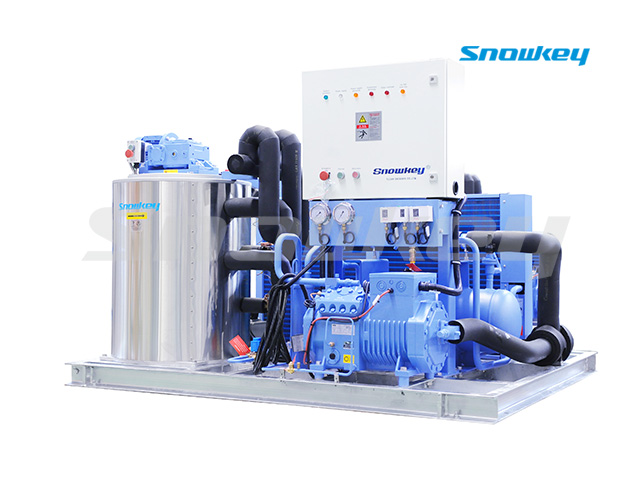
FAQ - Flake Ice Makers
What is a Flake Ice Machine?
Flake ice machines are ice makers that produce very small, thin ice pieces. The machine can be used in different environments tp produce ice. It has the ability to create large amounts of small, thin sheet flakes at a time. This makes it ideal for many different settings such as laboratories, ships, food markets, chemical and dye cooling, concrete cooling etc
What is the difference between nugget and flake ice?
A nugget ice is the type of ice that is served in most fast food restaurants.
It is made by pouring water over a flat metal plate. The water freezes, and the nuggets are broken off with a special device called an "ice picker."
Nugget ice has smaller pieces of ice so it melts quicker than flake ice.
Flake ice is formed by pouring water over a deep block of metal that has been cooled to below freezing.
The water freezes into long thin pieces that are then shaken or scraped off with a special machine to form flakes. This type of ice does not melt as quickly as nuggets, but it does have larger pieces of ice which are easier to chew on.
How is the ice removed from the evaporator of a flake ice machine?
The ice making process starts with the refrigeration of water. The water is then circulated through a series of tubes and is sprayed onto a metal surface, which is cooled by an external source such as air or ice. This causes water droplets to form and freeze.
When ice is scraped off the evaporator, it falls into a container. The container then feeds to a cutter that shaves it and drops it into another container. If the water in the evaporator is lowered to the desired level, all of the ice will be scraped off and fall into containers.
As we can see from this video, scrapping is used to remove ice from the surface of a flaker evaporator.
what are the two functions of the dual float switch in an ice flake machine?
The two functions of the dual float switch are to start and stop the ice scraper motor. The scraper does the job of scraping off any residue that may have built up on the ice maker. The cutter cuts up large pieces of ice into smaller chunks.
what to clean a flake ice machine?
Cleaning a flake ice machine is not an easy task. You need to ensure that the process does not damage the machine in any way. Some people recommend using hot water to wash it, while others say that one should use only warm water. We are going to find out what works best for this type of ice machine.
The best way to clean a flake ice machine is by using warm water mixed with soap. It will dissolve all the dirt and will leave no residue behind on the surface of your machine, which is essential for its durability and function.
what is the most energy efficient flake ice machine?
There are many different types of ice makers you can purchase, but the most popular are the flake ice machine.
Flake ice is a type of ice that is made up mainly from freshwater. It is different from other types of ice because it melts much slower than other forms, allowing for more time to have your drink at just the right temperature.
The most energy efficient flake ice machine is the Snowkey Ice Machine.
How to descale a flake ice machine?
To descale a flake ice machine, follow these steps:
1. Turn off and unplug the unit.
2. Empty the ice bin and clean it to remove any debris that might clog up the system.
3. Fill a bucket with water and add a small amount of dishwashing soap as an emulsifier to break down any calcium buildup on the evaporator plate.
4. Submerge the evaporator plate in soapy water and scrub it with a nylon brush until all of the calcium is removed from the metal surface of the evaporator plate and rinse thoroughly with clean water and dry completely before filling it back up again with water, restarting your system, and cleaning out your ice bin once more to remove any soap residue that might be left behind.
Flake Ice Plants for Concrete Concrete Cooling
Ice is used in Concrete Cooling to bring the temperature of the concrete down to acceptable limits, hence ensuring a consistent quality of concrete. This is especially critical where huge quantities of concrete are required and in areas with extremely low ambient temperatures. In general, concrete cures optimally between 15 and 22 degrees Celsius. Additionally, because to the large thickness of concrete, uneven cooling and curing of the concrete would occur due to temperature differentials between the inside and outside. All of this can be avoided by mixing flake ice into the water used to build the concrete. The shape of the flake ice aids in effective and even absolution.
Due to the enormous amount of heat required to melt the flake ice, utilizing flake ice has a far greater effect on the temperature of the concrete mix than using cold water. To chill 1 m3 of concrete by 1°C, approximately 33kg of cold water is required, whereas only 7.5kg of flake ice is required.
– Residential High-Rise Developments – Commercial Malls – Small and Used Flake Ice Macine
– Thermal Power Generation Projects – Nuclear Power Generation Projects
– Dams
Ice Plants can be containerized and placed near the project site. Ice can be created in refrigerated containers and then automatically conveyed to the Concrete Mixing Machine through pneumatic or screw conveyors as required.
Flake Ice for Dye and Pigments Dye and Pigments
Dyes and pigments are utilized in the plastics, dyestuffs, and textile industries, as well as in a variety of other industries. These dyes and pigments must be manufactured in reactors that undergo an exothermic chemical reaction.
This exothermic chemical reaction generates extremely high temperatures, which must be regulated for regulatory compliance and safety and quality purposes to avoid failed reactions.
This can be accomplished with flake ice. Our Flake Ice Pants generate dry ice, which aids in the control of this exothermic reaction while adhering to all applicable environmental, health, and safety regulations.
Our Flake Ice Pants provide turnkey cooling solutions for the dye and pigment industries.
Flake Ice Machine for Fish Seafood Cooling
Temperature reduction is critical for the preservation of fish and fisheries products on a global scale, both for domestic and export markets.
Chilling is the process of lowering the temperature of fish or fish products to a level close to that of melting ice. Chilling is used to extend the shelf life of fish by reducing the action of enzymes and bacteria, as well as chemical and physical processes that can degrade the product’s quality. Fresh fish is a highly perishable item that spoils rapidly at room temperature. By lowering the temperature at which the fish are housed, the rate of degradation is slowed. The temperature is lowered to that of melting ice, 0 °C/32 °F, during chilling.
The most frequently used method of chilling is with ice.
Ice has proven to be an excellent means of preserving fish and fishery products onboard fishing vessels for the following reasons:
- Ice is accessible in a wide variety of fishing areas and ports. • Purchasing patterns can be customized to meet specific needs (e.g., block ice of different sizes is frequently manufactured, and crushed, small or fragmentary ice ready for use is sold by weight).
- Ice has an extremely great capacity for cooling.
- Ice is a non-toxic substance that is generally inexpensive.
- Ice is capable of maintaining a very precise temperature.
- Ice can be used to keep fish wet and, when it melts, can be used to remove surface bacteria from the fish. • Ice can be transferred from one location to another, and its cooling effect can be transported to wherever it is needed.
To guarantee maximum contact between the ice and the fish, suitable particle size selection and stowage techniques are required.
The pace of chilling is determined by the following factors:
• fish size, shape, and thickness;
• storage method; and
• appropriate mixing of ice, water, and fish.

